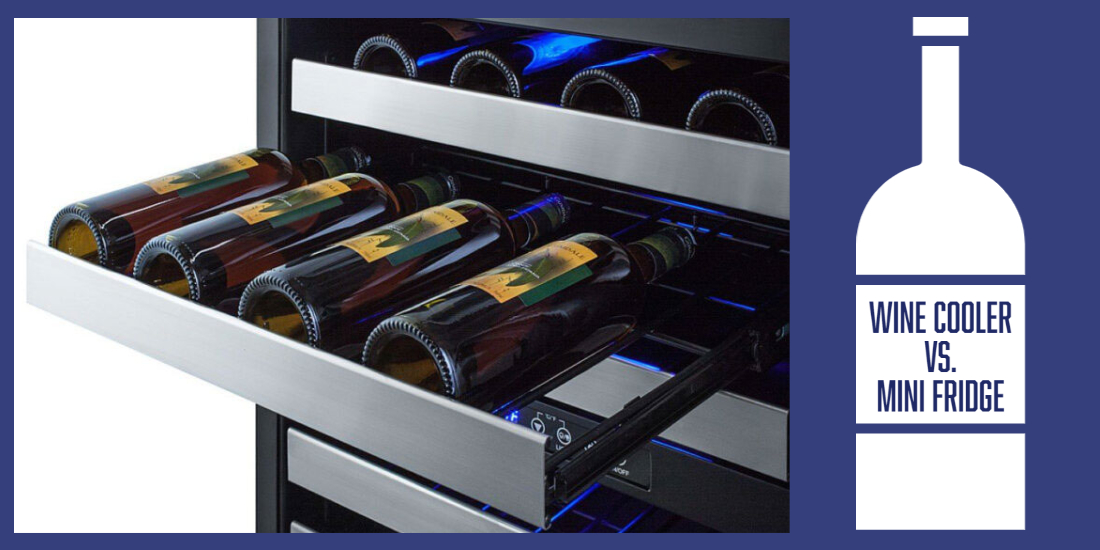The science behind mini fridge cooling is based on the principle of thermoelectricity, which involves the transfer of heat by the flow of electrons between two different materials. Mini fridges use a thermoelectric cooling system consisting of a Peltier module, a heat sink, and a fan.

When an electric current passes through the Peltier module, one side becomes hot while the other becomes cold. The heat sink and fan help dissipate the heat generated by the hot side while the module’s cold side cools the fridge’s interior.
This process occurs without refrigerants or moving parts, making mini-fridges more compact and energy-efficient.

Credit: ironmountainrefrigeration.com
Basics Of Refrigeration
Refrigeration is a fascinating scientific process that involves the principles of heat transfer. To understand how a mini fridge cools, it is essential to grasp these fundamental concepts.
| Heat Transfer Principle | Role in Cooling |
| Conduction | Conduction is vital in transferring heat from the interior to the exterior in a mini fridge. It occurs when the cold air inside the fridge comes into direct contact with the warmer objects, absorbing their heat. |
| Convection | Convection assists in cooling as warm air rises and cold air sinks, creating a continuous air circulation within the fridge. This process facilitates heat removal, ensuring an optimal cooling environment. |
| Evaporation | When a liquid refrigerant evaporates inside the mini fridge’s evaporator coils, it absorbs heat from the surrounding air, resulting in cooling. This phase change from liquid to gas enables effective heat removal. |
| Compression | The compressor plays a crucial role in the cooling process as it compresses the refrigerant gas, increasing its temperature and pressure. This enables efficient heat transfer during the condensation phase. |
| Condensation | During condensation, the compressed refrigerant gas releases heat as it comes into contact with the condenser coils. This heat is expelled to the surrounding environment, aiding in the cooling of the interior. |
Understanding these principles and the functions of the compressor, condenser, and evaporator helps demystify the science behind the cooling process in a mini fridge. These components work harmoniously to create an optimal cooling environment that chills your favorite snacks and beverages.
Mini Fridge Mechanics Explored
The cooling efficiency of mini fridges is closely related to their size. Compact refrigerators are designed to cool a limited space, so their mechanisms must be optimized for efficiency. One crucial aspect is the insulation technology used. These fridges typically employ high-quality insulation materials that minimize heat transfer, ensuring the internal temperature stays low.
Thermostat regulation and temperature control are also vital for maintaining optimal cooling. Mini fridges are equipped with precision thermostats that accurately regulate the temperature inside. These thermostats continuously monitor the temperature and adjust the cooling system accordingly.
Size versus cooling efficiency is another critical factor to consider. Small fridges have smaller compressors and cooling coils, which may reduce cooling power. However, advancements in technology have allowed manufacturers to optimize the cooling system of mini-fridges, ensuring they can efficiently cool the compact space they are designed for.
| Factors | Impact on Cooling Efficiency |
|---|---|
| Insulation technology | Minimizes heat transfer, maintains low internal temperature |
| Thermostat regulation | Precisely adjusts cooling system for optimal temperature control |
| Size | Smaller compressors and cooling coils, but advancements optimize cooling efficiency |
Impact Of Mini Fridge Design
The design of a mini fridge has a significant impact on its cooling capabilities. The space-saving features are carefully integrated to ensure efficient thermal performance. The choice of materials plays a crucial role in optimizing cooling efficiency. Conductive materials like aluminum and copper are commonly used for their excellent heat transfer properties. These materials help quickly dissipate the heat generated by the fridge’s compressor, ensuring efficient cooling. Another important aspect is the door seal, essential for maintaining the desired temperature inside the fridge. A tight and properly functioning door seal prevents cold air escape and minimizes temperature fluctuations. It is crucial to regularly inspect and replace the door seal if it becomes worn out or damaged. By understanding the science behind mini fridge cooling, manufacturers can develop innovative designs that deliver superior cooling performance while being energy efficient.
Innovation In Mini Fridge Efficiency
Advances in compressor technology have paved the way for significant improvements in mini-fridge efficiency. These innovative compressors incorporate cutting-edge techniques to enhance cooling performance while minimizing energy consumption. Mini-fridges can maintain optimal cooling conditions with minimal fluctuations by utilizing precise temperature control mechanisms. This not only helps to preserve the freshness of stored items but also ensures energy is used efficiently.
Another aspect contributing to the efficiency of mini fridges is the use of eco-friendly refrigerants. These environmentally conscious alternatives not only have a reduced impact on the ozone layer but also offer benefits such as improved energy efficiency and reduced energy consumption. By opting for refrigerants designed to have a lower global warming potential (GWP) and reduced direct emissions, the overall environmental impact of mini fridges can be minimized.
Considering energy consumption and cost-effectiveness, mini-fridges have become more economical in recent years. Manufacturers are continually working towards developing energy-efficient models that can deliver reliable cooling without significantly increasing electricity bills. Implementing advanced insulation techniques and optimizing compressor operations has made mini-fridges more cost-effective, making them a practical choice for various applications.
| Advancements in Mini Fridge Efficiency |
|---|
| Innovative compressor technology |
| Eco-friendly refrigerants |
| Energy consumption and cost-effectiveness |
Troubleshooting Common Mini Fridge Issues
Mini fridges are a convenient addition to dorm rooms, offices, and even bedrooms. However, like other appliances, they can experience cooling issues over time. Recognizing signs of insufficient cooling is crucial in troubleshooting common mini fridge problems. An essential tip for maintaining prolonged efficiency is to keep the coils clean from dust or debris buildup. Regularly defrosting the mini fridge and ensuring proper ventilation around the appliance can also prevent cooling problems. If, despite these measures, the fridge still fails to cool adequately, it may be time to seek professional repairs. Professional technicians have the expertise to diagnose and fix more complex cooling system issues. By being aware of these troubleshooting tips and knowing when professional help is needed, you can keep your mini fridge running efficiently and enjoy its benefits for a long time.
Frequently Asked Questions Of The Science Behind Mini Fridge Cooling
How Does A Mini Fridge Cool?
A mini fridge cools using a compressor and refrigerant gas to remove heat from the inside. The compressor compresses the gas, causing it to become hot. The hot gas then flows through coils, dissipating heat, and becomes a cool liquid.
What Is The Working Principle Of Mini Refrigerator?
The mini refrigerator works by using a compressor to circulate refrigerant through coils. This process removes heat from inside the fridge, keeping the temperature low. The cooling effect is produced by the evaporation and condensation of the refrigerant, allowing the fridge to keep items cold.
What Is The Principle Of Cooling In A Refrigerator?
Cooling in a refrigerator involves using a refrigerant that circulates through the system, absorbing heat from the food items inside. This refrigerant undergoes a process of compression and expansion, which causes it to release heat outside the appliance and cool down the interior.
What Is The Cooling Mechanism Of A Refrigerator?
A refrigerator cools food by using a refrigeration cycle. It employs a compressor to compress refrigerant gas, causing it to release heat. As the gas expands in the evaporator coil, it absorbs heat inside the fridge, cooling the air.
The cooled air is then circulated to maintain low temperatures.
Conclusion
The science behind mini fridge cooling is a fascinating one. Understanding how these compact appliances work can give us a better appreciation for their efficiency and convenience. Utilizing various mechanisms such as thermoelectric cooling or compressor systems, mini-fridges can maintain lower temperatures and keep our food fresh.
Whether using a mini fridge in your dorm room, office, or on-the-go, knowing the science behind its cooling process can help you make the most of this practical appliance.


GIPHY App Key not set. Please check settings